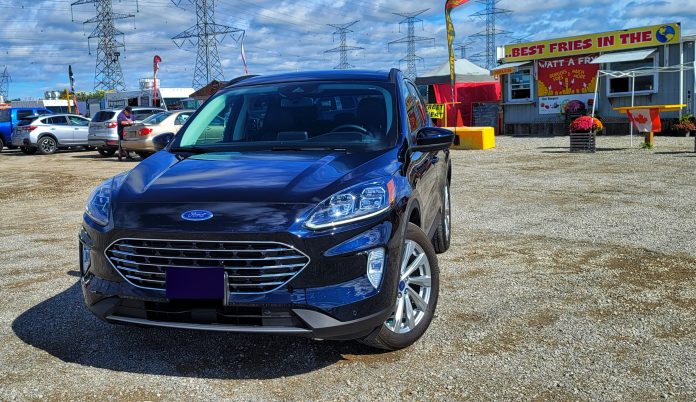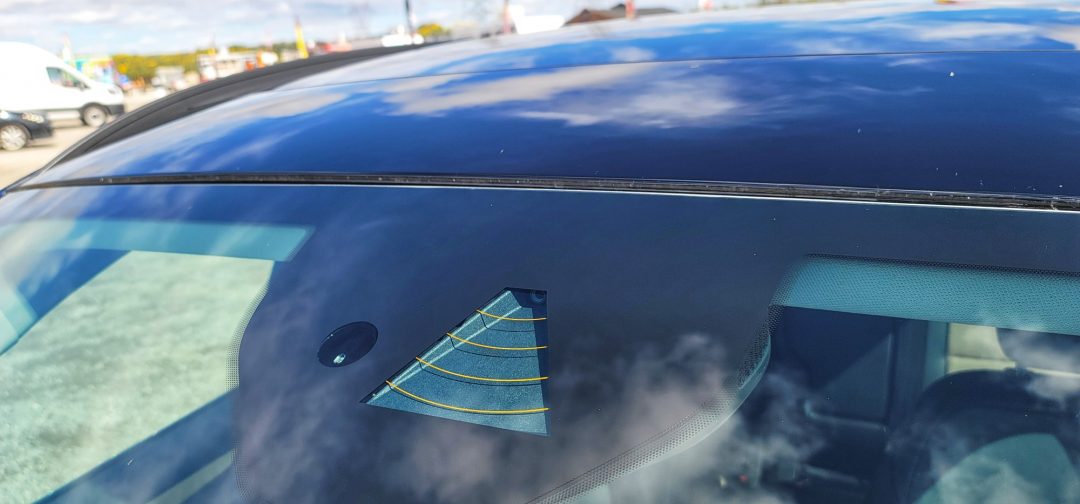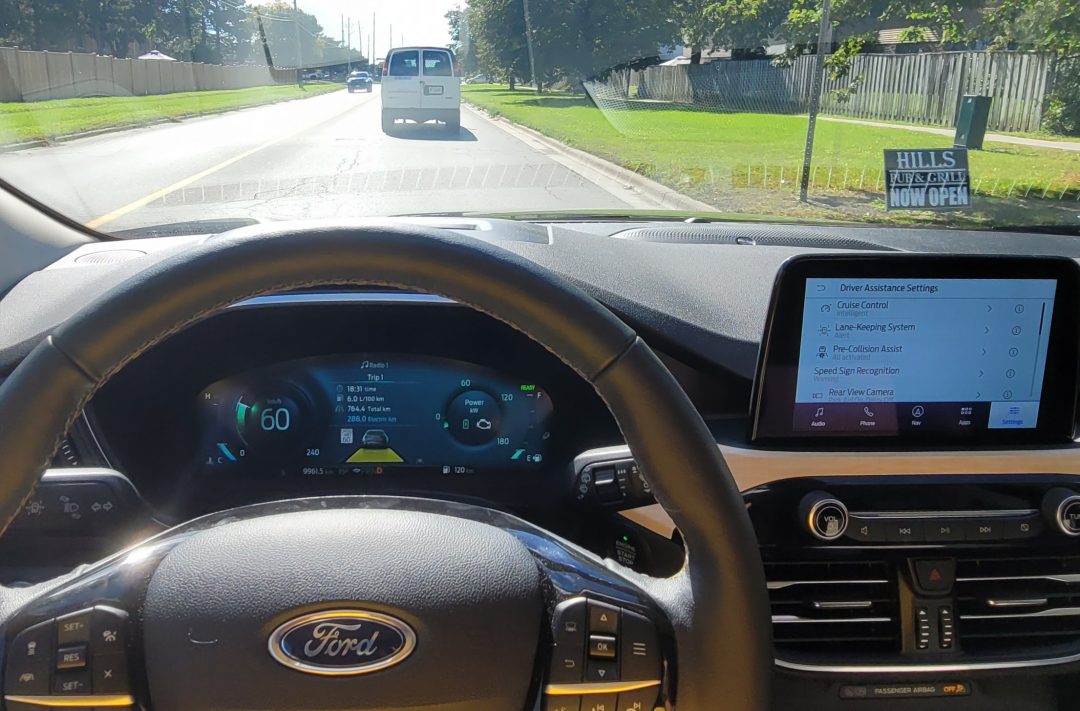Autonomous vehicles do not provide complete road safety as purported.
There are numerous challenges that self-driving cars have to manage, such as the complexity of traffic scenarios, the vulnerability of the AI system to hacking and the unrealistic expectations of the consumer.
Essentially, the self-driving technology includes a camera, the Light Detection and Ranging (LiDAR) unit, several radar sensors, and the central computer that measures, for example, the GPS coordinates. With all this witchcraft-spec, the purpose is to scan objects around the vehicle and avoid a collision.
The 2021 Ford Escape self-driving technology has one camera connected to sensors.
Nevertheless, in metropolitan areas, for instance, São Paulo, Brazil, cyclists can appear from nowhere. Kids cross the street without looking, and different weather conditions during the day can result in a system error, leading to a car crash.
Self-driving vehicles have software that controls different functionalities. For this reason, the same as any data processor, the program becomes vulnerable to hackers.
In 2015, the American magazine, Wired, demonstrated how easy it was to access the JEEP Cherokee’s computer when the car was connected to the internet. Also, a wreck could occur in extreme situations when the hacker controls the steering wheel, transmission, and brakes.
According to Upstream Security, a cyber security company, in 2019 there were almost 150 automotive cybersecurity episodes. The effect of this is that each car brand determines which software to be applied, and the timing of upgrades follows the manufacturer’s discretion. This situation requires much time from manufacturers to improve and protect the system.
The latest update on the 2021 Ford Escape was on June 20, 2021
From the consumers’ viewpoint, autonomous vehicles can confuse them when it is impossible to identify which technology level the car has, how to operate the system and how to understand the confusing marketing.
As automation has been developing, the technology level has received numerous rules and interpretations.
As revealed in 2016, SAE International considered, as part of driving automation tech, the Level 0 when a vehicle had lane-keeping assistance.
Today, after the revised studies, SAE International determines when a car has the lane-keeping assistance, lane centering and adaptive cruise control feature, Level 2.
This factor creates uncertainty for the car buyer. The technology level could lead to thinking that a particular vehicle can perform and protect them and others; it turns out, the equipment cannot provide.

The 2021 Ford Escape is an example of a self-driving vehicle level 2
Another concern is that there are many buttons to press on the steering wheel and many options to select from the touchscreen, making it less intuitive to engage the system. Also, in certain situations, the drivers cannot know whether it is working.
Many buttons and options to choose from can be a distraction while driving
Moreover, the ‘Full Self-Driving’ term is present as a market strategy. Paying $10,600 for the “Full Self-Driving Capability” features such as Navigate on Autopilot, Auto Lane Change and Traffic Light and Stop Sign Control will be available. To illustrate, Tesla Inc. brings the following information on their website.
On the other hand, on the same web page, there is a contradiction. Tesla Inc. announced that “the currently enabled features require active driver supervision and do not make the vehicle autonomous.”
One reason is that the American car company must follow the National Highway Traffic Safety Administration (NHTSA) rules. The NHTSA defines a driverless car, known as Level 5, as a “vehicle can do all the driving in all circumstances. The human occupants are just passengers and need never be involved in driving.”
It is possible to conclude that ‘Full Self-Driving’ misleads the customers. Even though Tesla Inc. tries to guarantee their electric cars are the safest, in the present day, no vehicle produced on a large scale achieves this.
In addition, drivers could rely on this innovation and get more distracted with their cell phones while believing that the “car is driving itself” on the highway.
The automobile industry intends to make car buyers feel safer when they adopt self-driving vehicles. However, technology still has a long path ahead to become truly road-safe for everyone.







